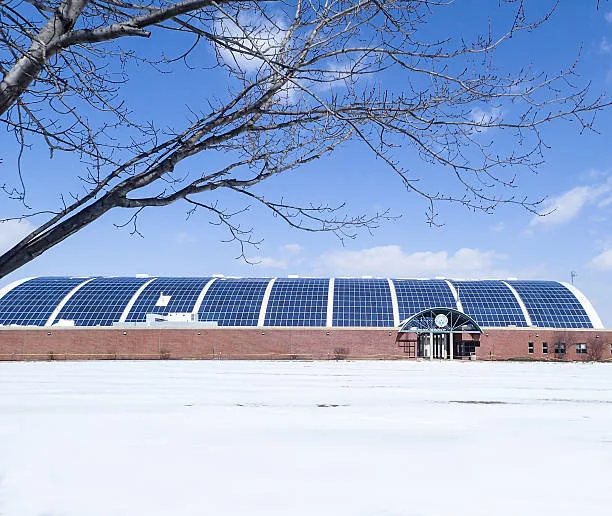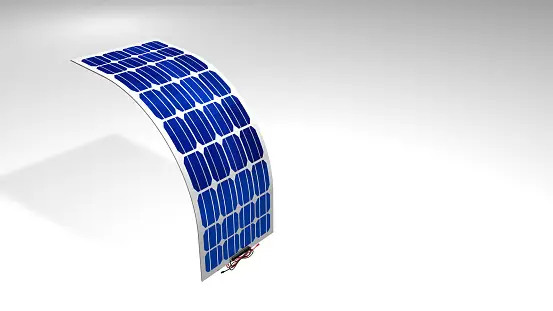Thin solar panel or Flexible solar panels | 2023
Advance Technology of Solar Panels
Every year, the technology of solar panels advances quickly, and new innovations like Flexible solar panels are continually being created. Flexible solar panels are often more lightweight than traditional solar panels, can be utilized without the help of the electrical grid, and frequently act as battery chargers for electronic devices.
Thickness of Flexible solar panels
Silicon wafers make up a typical monocrystalline or polycrystalline solar module. Typically, they can reach a thickness of 200 micrometres, which is somewhat thicker than a human hair.
Silicon wafers must be thinly sliced, to just a few micrometers, in order to create a flexible solar panel. Solar panels using these incredibly thin silicon wafers have numerous special qualities, including flexibility for specific types.
Ultra-thin silicon cell-based flexible solar panels have been around for a time. More recently, developments in organic solar cells have been made thanks to research at the Massachusetts Institute of Technology. Researchers have discovered a technique to use organic materials with electrodes made of graphene in place of silicon as the primary component of solar cells.
The brittleness of conventional electrodes has hitherto been a constraint on panel flexibility, but because graphene is transparent and flexible, this approach may eventually result in smaller, more flexible, and more stable solar panels.
The main challenge with thin film or flexible solar panels is their lower efficiency when compared to conventional solar panels.
Advantages and Disadvantages of Flexible solar panels

The average monocrystalline or polycrystalline panel’s efficiency rating nowadays is between 16 and 20 percent. On the other hand, thin film solar panels typically give an efficiency of seven to15 percent.
For some solar projects with limited roof area for installation, this decreased efficiency means that more solar panels are required to provide the same quantity of energy.
Additionally, because there might not be enough roof space to generate the appropriate quantity of electricity, flexible solar panels aren’t a good fit for many home rooftop solar projects.
Flexible solar panels are ideal for small solar projects on surfaces like RV roofs or boats due to their portability and endurance as they may endure physical wear and tear that would not happen on a stationary roof.
Flexible panels are perfect for these smaller, mobile solar projects that don’t require a lot of energy due to their endurance and lighter weight.
When you require a portable solar solution, flexible solar panels work well. One option to produce solar power while travelling, such as on the roof of an RV, is with products like the Winnewsun Flexible Solar Panel. Also an excellent option are foldable solar panels like the SUAOKI Solar Charger. If you need lightweight and portable power for camping and hiking vacations, folding solar panels are a perfect choice, just like flexible panels.
In general, a flexible solar panel configuration is preferable for mobile solar power as opposed to a long-term house solar solution. Having a strong, light, and flexible solar panel arrangement might be a terrific method to produce electricity when you’re out on the trail, camping, or travelling a long distance.

Flexible Solar Panel with Biface
Because it produces power from both sides and weighs only four pounds, the flexible solar panel is special.
The product’s efficiency rating reflects this “bifacial” production: it boasts an efficiency of 22%, which is significantly greater than that of conventional single-sided flexible solar panels.
There are very few options available for installation; to get the full benefit of the panel, you must position it such that all sides can absorb sunlight.
SOME OF THE MOST FAMOUSE FLEXIBLE SOLAR PANELS
WindyNation, SunPower, and Renogy routinely rank among the top manufacturers of flexible solar panel products. These producers create flexible solar panels that are known for their effectiveness, dependability, and robust construction.

FAQ
- What solar panels are the lightest?
The average weight of flexible solar panels is five pounds as opposed to 40 pounds for rigid panels. Flexible solar panels are excellent for portable applications because they are less in weight and smaller in size.
- 1. Why do flexible solar cells not work?
Thin-film flexible solar panels are susceptible to substantial damage as well as bending beyond the advised curve radius. As a result, the organic solar cells and other delicate layers are harmed. - 2. Are solar panels that are flexible less effective?
- Yes, normally flexible solar panels perform between 5 and 10 percent worse than their rigid counterparts.
- 3. Do pliable solar panels endure?
- Flexible solar panels often don’t last as long and frequently aren’t covered by a lengthy warranty because they are less resilient and frequently more prone to damage than rigid solar panels.
- 4. What is the smallest solar panel currently in use?
- The Renogy Flexible Monocrystalline Solar Panel, which has a thickness of 0.08 inches, is the thinnest solar panel for residential homes on our list.
- 5. How do stretchable solar cells function?
- Like rigid solar panels, flexible solar cells harness energy from the sun and use the photovoltaic effect to transform it into useful electricity.
- 6.Areflexible solar panels less expensive?
- Flexible panels are practical for many mobile applications since they are less expensive, simpler to install, and flexible.
- 7.How durable are flexible solar panels?
- A flexible solar panel should typically endure for 15 years or more if left in place and continue to generate respectable power. But regularly handled panels might only survive five years, which is much shorter than the 25 to 30 years stiff panels are supposed to endure.
- 8.Do flexible solar panels get too hot?
- Due to the flexible solar panel’s close proximity to the roof, heat can build up and damage the panel, reducing its lifespan. Photovoltaic cells that are overheated may lose up to 10 to 25 percent of their rated output, making them less effective.
- 9.How Effective Are Flexible Solar Panels?
- Just as its name suggests, flexible solar panels are solar panels that can bend. By “flexible,” we do not, however, suggest that they can be folded.
- Instead, they can typically curve to a respectable degree. The interior cells and electrical structure will still malfunction if they are twisted too far.
Follow Our Digiknowledge.co.in Page for Latest update about Bikes, Cars, Sports, Government Policy and many more.




